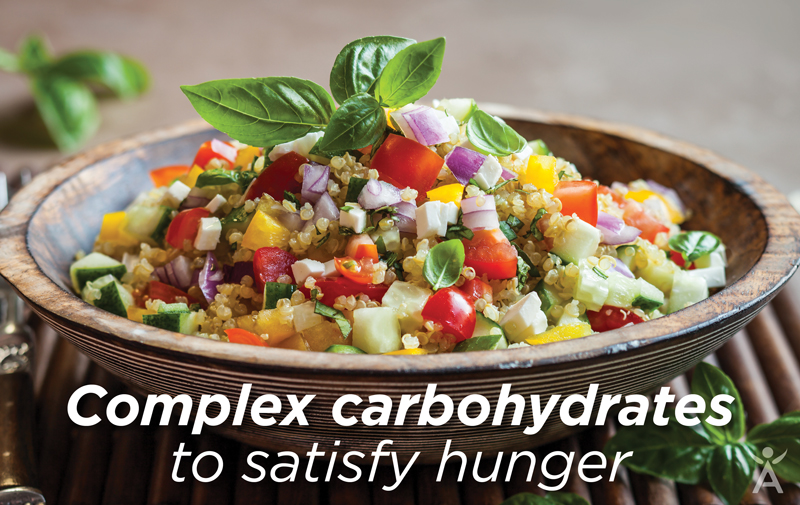Constipation isn’t a likely topic you’d bring up when chatting with friends or co-workers, but odds are at least one person in the group has, is or will experience symptoms at some point.
As the most common digestive complaint, most everyone can say they’ve had a bout of being ‘backed up’. Six out of ten Australians don’t eat enough fibre and even more don’t get the right combination of fibres (5).
The good news is that it’s not a permanent predicament and there are ways to deal with and get over being constipated.
Below are five diet and lifestyle changes that may help remedy the unpleasant symptoms of constipation and get things ‘moving’.
1. Eat more dietary fibre. A fibre-rich diet is one of the best tactics for staying regular. But what is fibre and how much do you need?
Dietary fibre is found in two forms, soluble and insoluble. Soluble fibre (commonly referred to as viscous fibre) forms a gel in the stomach, which slows digestion and supports satiety. Insoluble fibre is not as readily digested in the stomach, pushing along waste and helping increase gastric motility (2, 3). Both forms play different roles in maintaining a healthy digestive tract and are equally important.
The best way to ensure you’re consuming the recommended 25 to 35 grams of dietary fibre, both soluble and insoluble, is by eating a variety of fruits, vegetables, whole grains, beans and legumes. Isagenix® IsaLean™ Shakes also provide an excellent source of viscous fibre to the body and insoluble fibre can easily be added by blending fruit or ground flaxseed into your shake. FibreSnacks™ is another fibre-rich option for those needing additional bowel support.
2. Engage in regular exercise. Movement of the body when engaging in any kind of physical activity or exercise can help increase gastric motility. Taking walks for as little as 10 minutes throughout the day can be the change needed to get the digestive tract functioning normally. Try walking after a meal to assist with digestion and alleviate stomach discomfort.
3. Drink lots of water. Staying hydrated is of increased importance for those struggling with constipation. Think of it this way: When the body is dehydrated, so is the digestive tract. Water is what helps keep digestion flowing, and without enough water, digestion can come to an uncomfortable halt. To make sure your digestive tract is getting the fluid it needs, try to consume at least eight to ten cups of water throughout the day.
4. Make sure to get enough magnesium. Known for its crucial role in heart and muscle function, magnesium has also been shown to relax the intestinal muscles and draw in water (4). This relaxation and increased hydration of the intestines has been shown to alleviate the symptoms of constipation and improve digestion.
Eat dark green leafy vegetables like broccoli, kale and spinach, or snack on nuts such as almonds and cashews for great sources of magnesium. Additionally, the Isagenix digestive aid IsaFlush® contains 200 milligrams of magnesium along with digestion-supporting herbs that support healthy regularity.
5. Support healthy gut bacteria. Not all bacteria are bad. Our intestines house bacteria called probiotics and they’re essential for a healthy immune system and optimal nutrient absorption. Maintaining healthy gut bacteria can assist with proper digestion and therefore may aid in decreasing symptoms of constipation. Nourish gut bacteria by consuming prebiotics (food that gut bacteria thrive on) as well as probiotics. Yoghurt and kefir are excellent sources of probiotics and should be consumed daily. IsaLean Shakes also contain prebiotic fibre called isomaltoogliosaccharide to support gut health.
Constipation is no laughing (or social talking) matter, and if it persists it’s important to consult a doctor about the cause and possible treatments. But for the most part, it’s just a matter of being sure to incorporate a few simple lifestyle changes to move things along and get back to normal.
Check out this post for more answers to 8 questions you were too afraid to ask about Isagenix!
References
- Higgins P, Johanson J. Epidemiology of constipation in North America: a systematic review. Am J Gastroenterol. 2004; 99: 750–759
- 7 Dietary, Functional, and Total Fiber. Dietary Reference Intakes for Energy, Carbohydrate, Fiber, Fat, Fatty Acids, Cholesterol, Protein, and Amino Acids (Macronutrients). Washington, DC: The National Academies Press, 2005 .
- Bell SJ. A review of dietary fiber and health: focus on raisins. Journal of Medicinal Food. 2011;14:877–883.
- Hoy SM, Scott LJ, Wagstaff AJ. Sodium picosulfate/magnesium citrate: a review of its use as a colorectal cleanser. Drugs. 2009;69:123–136.
- Topping D, Cross A and Hammang C. 2014. Health Check: are you eating the right sorts of fibre?. [ONLINE] Available at: <http://www.australasianscience.com.au/article/issue-januaryfebruary-2014/health-check-are-you-eating-right-sorts-fibre.html>. [Accessed 14 April 15].






